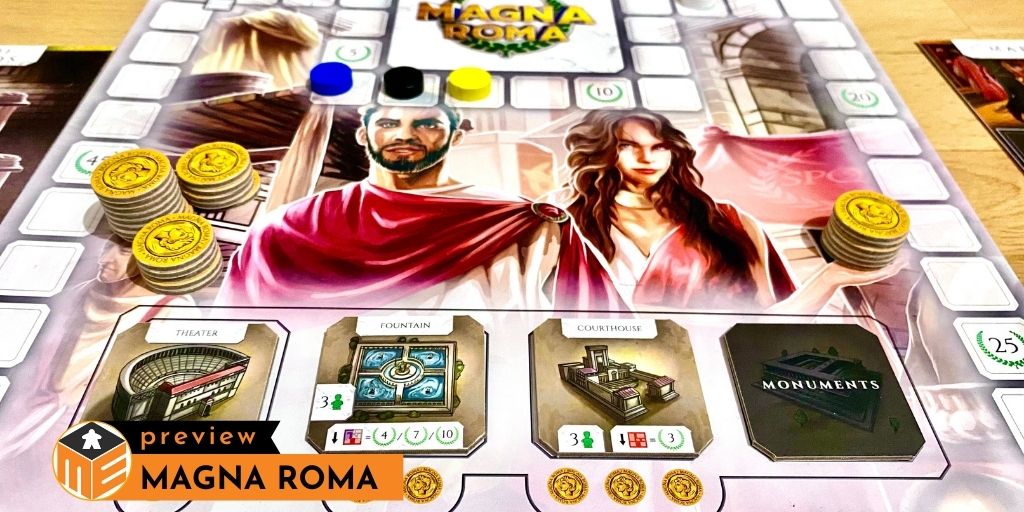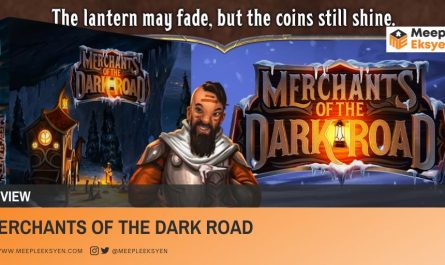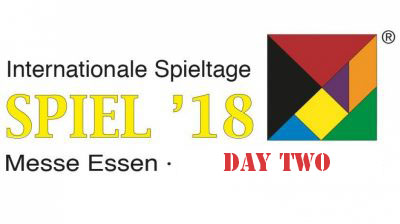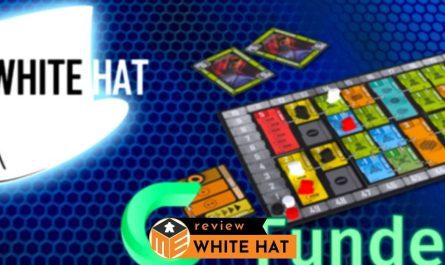Before Magna Roma, Archona Games has been one of the familiar faces for us in the board game ecosystem since SPIEL Essen 2017. We have met personally with Milan Tasevski, the founder himself, in his modest stand, showing Small Star Empires. For those who hasn’t yet read our review, you can take some steps back and probe a bit.
Post-delivering his recent Kickstarter with the same concept but different landscape in feudal Japan, his studio’s next creation takes place in the ancient Roman Empire. Spoiler, this game does not belong to the Small Empire line. This time, you will get a big box for Magna Roma.
A short disclaimer before you read my board game analysis
As an avid euro gamer and hardcore Legend of the Five Rings (L5R) LCG player, my reviews may reflect a preference for these styles, and I may not cover solo games/variants extensively. Please note that my personal remarks are based on my gaming experiences, and I aim to provide honest insights within the scope of my preferences.
Magna Roma is not yet released, but we had the honour to be ones of the first testers who got the limited preview copies. Therefore, just like the other previews we wrote in the past, we’d like to add another disclaimer. For your information, they are planning to launch the Kickstarter campaign at the end of March 2021.
Hinweis: Wir hatten für diese Rezension eine Vorabversion und nicht das endgültige Produkt. Es könnten Änderungen und Anpassungen des Verlags hinsichtlich der Komponenten, Druck- und Verarbeitungsqualität, Regeln und Konzepte im offiziell veröffentlichten Produkt vorgenommen werden.
MAGNA ROMA IN A GLANCE

Milan decided to utilize the tile placement mechanic as the game’s core concept. Revolving around this primary idea are drafting and resource management. Players build their cities and gain points from these mechanics. The city starts from each city centre and keeps expanding without crossing the 5×5 grid. To put it bluntly, we play Magna Roma by taking the tile we drafted, laying it beside the next tile on the grid, activating its effect, taking one optional action, and ending our turn by drafting the next tile we want to use next round.
The effect activation is triggered through the symbol configuration.
There are six possible symbols in the game (excluding the stars), each brings different action and generates various resources. With different board sections in this game, we will have a lot to consider. Some resources contribute to the end-game scoring, while some others are only useful during the game.
The tile drafting system is somewhat different
The drafting process is a bit different to other similar games. In Magna Roma, we don’t draft tiles together with other players every round. Instead, whenever I finish taking my turn, I end it by choosing the next tile I want to build into my grid next turn. After that, a new tile is drawn from the stack, so the next player has the same number of choices to draft.

Despite feels alike in comparison to the usual drafting process, we have more freedom with this system. All players always have tile options when they end their turns, and Magna Roma becomes more strategic because we need to think ahead and decide beforehand what we want to do in the upcoming turn.
Many things happen around the boards
With one board for Neighbourhood, Market, Military, and Favour of the Gods, there are a lot to track on during the game besides the tiles we want to draft and lay. The Neighbourhood and Market ones are closely related with each other for the end-game scoring. Each star icon on the tile grants us one step on the Neighbourhood board based on the tile’s colour. The lowest number from this board will be multiplied with the highest one we achieve on the Market board. That means, we cannot just spam drafting and laying one particular colour to maximize the resource generated through the symbols. Both boards need our consideration to maximize points at the end of the game.

Be careful with the Market board because we all start with -2 value. It takes an effort to advance this marker to get at least to 1 point multiplier. If we are not careful, it can really hurt your points in Magna Roma. Through this board, we can also trade surplus resource with other ones we deem important, too. I like this board so much.

We can get a Favour of Gods’ token when advancing our marker to a specific position on the related board. The more advanced our marker is, the more points we can get if we don’t spend the token until the end of the game. We can utilize this token in Magna Roma to once again trigger the whole symbols on a tile. While it sounds tempting to generate that many resources, we have to calculate how many points we lost when spending the token, too. In the end, we win not by counting resources but points.

If the other three boards are advancing in linear, the value on the Military board can increase and decrease. We can always spend the “legions” (the value in this board) to conquer provinces. Each of them comes with different requirements. When fulfilled, it grants extra points at the end of the game. Keep in mind to pick what’s best for your city.

Building monuments inside your city
Besides founding the best city, we need to entertain the population within. Building monuments is the way to keep the Romans pleased. We have to pay the cost (in Gold) to erect the monuments, and the cost varies from 1-3 golds, depending on the monument placement on the board (see the cover picture). To score these monuments, we have to populate them with the Romans. Therefore, population is also another resource in the game that we need to generate points at the end of the game.
HONEST OPINION FOR MAGNA ROMA
Magna Roma has multiple layers of decision-making process within. From the grand design, it is indeed a tile-laying game, but deep down, you can dig and find pattern building through its symbols, too. They show up when we lay them down, creating the 5×5 city grid, and each of them generates different resources and points during the game. With various resources, we have to manage them all carefully because some of them are not beneficial for the scoring, as mentioned above.

The resource management dominates your decision-making for the rest of the game. During our 24 rounds, not only we had to think about how to build the best 5×5 city grid, we have to consider which resources we get by placing tiles. We don’t want to have too much population if it is not beneficial for your city, for example. Taking the wrong resources means we lose momentum, so carefully planning and managing what we want to generate is the best way to win.
I like how close Magna Roma’s game can be. We have tried the game with four players, and it did not drag the time too long, even though it lasted for 24 rounds. The game is pretty simple and enjoyable. Despite so many things happening on the boards, we could keep tracking them easily. So many things to consider with varied game experiences from each session, I think you may like to add the game into your shelf.
VERDICT
I cannot talk much about the build quality and artwork, as it is not the final version. For the gameplay, as we speak, Magna Roma is still getting through some final adjustments to make the game more interesting. Should you back Magna Roma? Will this game be a good addition to your shelf? Definitely yes!
I am a full-time food technologist during weekdays. However, when the calendar hits weekends, I transform into an avid board gamer. I am a hardcore Legend of the Five Rings (L5R) LCG player from Fantasy Flight Games (FFG). Current hobby: buying board games. My shelf of shame’s list is getting longer, thanks to you, Kickstarter.





